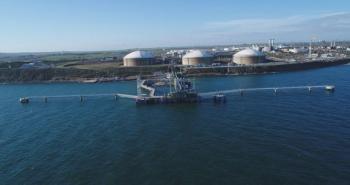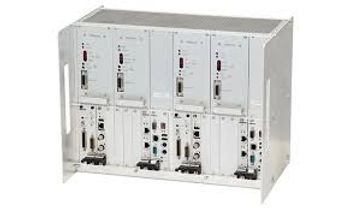
- Handbook 2025
- Volume 65
- Issue 6
Worldwide Gas Turbine Forecast 2025
The gas turbine market is stable and will remain so among factors such as hydrogen, digitalization, and renewable energy.
The gas turbine market for electrical generation has been and will continue to be stable barring any unforeseen circumstances, such as the 2020 pandemic, that affected many markets. That said, the major players such as Siemens Energy, Mitsubishi Power, and GE Vernova still hold the majority of the market value. Major trends will likely not affect turbine production itself, as production rates remain stable for now. Forces like hydrogen use, digitalization, and renewable energy have the potential to be market-altering, but to what degree is uncertain.
HYDROGEN READY?
Gas turbines offer a promising avenue for decarbonization through their adaptability to hydrogen fuel. However, the transition involves significant challenges, including:
- adjustments to control systems
- safety concerns
- economic considerations
While existing turbines can be retrofitted with hydrogen-compatible burners, the combustion characteristics of hydrogen differ significantly from natural gas, necessitating modifications to ensure efficient and stable operation. The economic viability of hydrogen-fueled gas turbines is also influenced by the initial investment in retrofitting or purchasing new units, in addition to the cost of hydrogen itself. Transporting hydrogen will be a factor as well, either pipelines or an on-site hydrogen production facility will be necessary. Digitalization also has a role in the future of gas turbine technology.
DIGITALIZATION
The integration of digital technologies is revolutionizing the operation and maintenance of gas turbines. Utilizing sensors, data analytics, and artificial intelligence, operators can gain valuable insights into turbine performance and health. Predictive maintenance algorithms can anticipate potential failures, allowing for proactive maintenance and minimizing downtime.
Digitalization also enables remote monitoring and control, reducing the need for onsite personnel and improving operational efficiency. Furthermore, digital twin technologies can create virtual replicas of gas turbines, providing a platform for testing different operating conditions and optimizing performance. Gas turbines can also be leveraged for use in conjunction with renewable resources.
TURBINES + RENEWABLES
Hybrid systems—gas turbines combined with renewable energy sources such as solar or wind power—offer a powerful solution to address the challenges associated with energy production. These systems leverage the complementary strengths of both technologies, providing reliable baseload power from gas turbines and intermittent clean energy from renewable sources.
HYBRID SYSTEMS:
- enhance grid stability
- optimize energy efficiency
- reduce reliance on fossil fuels, contributing to a cleaner energy future
What does all this mean? Gas turbines have the potential to gain even more popularity than currently, but will that offset the unused capacity already installed worldwide? The Irsching Power Station in Germany, for example, is reportedly running only one out of three units at the plant. Hydrogen, too, has its opponents: A recent report from the Institute for Energy Economics and Financial Analysis suggests that hydrogen might not be the best way forward for gas turbines.
Therefore, balancing the potential gain in popularity among energy companies and the public with the unknowns of hydrogen’s future in this market and the issue that many turbines are not being fully utilized translates to a stable market in this analyst’s eyes. No massive swings in the market are foreseen at this time.
As displayed in FIGURE 1, the value of the gas turbine market for electrical power generation will remain stable moving forward. The most popular turbines will fall in the 250 - 500 MW output range (FIGURE 2), with GE Vernova, Siemens Energy, and Mitsubishi Power holding the position of top-three manufacturers (FIGURE 3).
As an example of the current stable market, Forecast International’s (FI) Industrial & Marine Gas Turbine Installations Database lists 105 SGT5/6- 8000H turbines ordered, with most being installed now. Installations, and therefore orders (FI lists install years as orders are announced), are at about two to five per year. This has not changed significantly since 2018 when many of Siemens Energy’s machines were installed worldwide. This trend extends to other models.
In conclusion, gas turbines will have a place in the future of power generation. Hydrogen and other technologies, although promising, will not likely affect overall production, as current machines can be utilized instead of installing new capacity, and the future of these technologies remains to be seen.
ABOUT THE AUTHOR
Carter Palmer is an Industrial & Marine Turbine Analyst at Forecast International, a provider of market intelligence forecasting, proprietary research, and consulting services for the aerospace, defense, and power systems industries.
Articles in this issue
about 1 year ago
Myth: Centrifugal Compressor Maps: Surge and Chokeabout 1 year ago
Challenges with Dry Gas Seals for Turbocompressorsabout 1 year ago
Q&A: Gas Turbines and Decentralized Energy Systemsabout 1 year ago
U.S. Power Industry Outlook 2025about 1 year ago
Turbomachinery International: 2025 HandbookNewsletter
Power your knowledge with the latest in turbine technology, engineering advances, and energy solutions—subscribe to Turbomachinery International today.




